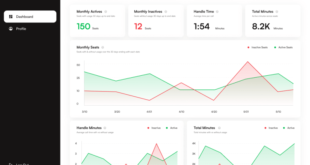You’d think that a company that delivers medical samples, by drone, would thrive in today’s COVID-19 environment. But even when you’re well equipped with relevant technology, like San Francisco-based Matternet, the world has become so topsy-turvy that you might face just as many troubles as any other business.
Because Matternet supplies services to the health care industry, the startup has been able to maintain a skeletal crew under the California stay-at-home mandate. But Matternet has also had to halt operations, which hasn’t been previously reported, in three of its four locations: San Diego, California, and Lugano and Zurich, Switzerland. We talked to CEO Andreas Raptopoulos to find out what the last few weeks have been like for the business and where the company wants to focus next.
“When the outbreak started to happen, we started looking at what can we do to help,” Raptopoulos told VentureBeat. “We have been working on that with our partners UPS, Swiss Post, and the FAA as well. We’ve been quite engaged in trying to figure out how can we launch operations that can help in this new reality. Social distancing is a must, and we must protect our populations.”
Operations on pause
Matternet has been forced to stop flying drones in the U.S. and Switzerland. When COVID-19 cases spiked, each hospital’s approach was slightly different, but the theme was the same. “In a crisis, you need to focus all your resources to dealing with that crisis,” Raptopoulos said. “Your normal processes and procedures are stopped.”
Lugano was the first location where Matternet had to pause operations, which consisted of transporting blood samples between two hospital facilities since 2017. (The city is near Milan, which was the center of the outbreak in Italy.) If a blood sample taken in the emergency room was deemed urgent, it was transported to another facility by drone. But the hospital had to shut down the emergency room facility to repurpose it as a COVID-19 response facility. The same thing happened in San Diego — the hospital had to repurpose its facility to serve COVID-19 patients. In Zurich, the director of Switzerland’s main virology lab decided that all the processes would be switched to COVID-19 emergency response. The blood samples and urine specimens that Matternet was transporting for the lab were simply deprioritized.
“It’s not to do with the drone or the service that we’re providing, it’s the architecture of the hospital changed,” Raptopoulos explained. “So, I don’t think it’s ‘Hey, this is a luxury and we cannot have that luxury right now.’ Because what we’re doing in hospitals is deemed as essential, otherwise we wouldn’t be doing it. But it’s more to do with the way that these hospitals have to respond to a crisis, which leads to certain consequences on the architecture of their system.”
The pause of operations “creates a very interesting tension, if you will,” Raptopoulos added. “On the one hand, we have the technology that can really be helpful in these times. On the other hand, we are not yet deploying it to the scale that we wish to deploy it.”
Other operations
Matternet is still running daily operations in Wakeman, North Carolina. “There we are connecting a surgery center on campus with the main lab,” Raptopoulos said. “Right now, in this climate there are fewer surgeries. Everything that is an elective surgery can be pushed out. There’s less volume of transport every day, but the service is continuing.”
Plenty of other industries that aren’t as critical as hospitals and labs need to function during the pandemic. Drones can be useful anywhere social distancing needs to be applied. We asked if Matternet was thus exploring other potential customers.
“We’ve been focused on two applications,” Raptopoulos said. “One is transporting COVID-19 tests from collection sites to the labs. The second application is what everyone else is talking about, the so-called contactless delivery. The benefit the drone can provide here is when you need the prescription medicine, for instance, delivered to an elderly home. Instead of having a truck doing it and a driver going into that location, potentially putting people at risk, you can instead dispatch it by a drone and there is much less risk of spreading the virus.”
The startup has made progress on these applications, but has nothing to concrete to announce yet. It is working with UPS, the FAA, and two lab directors in two different states to figure out what they can do help.
Drones have also been used to survey crowds for higher temperatures that might indicate individuals have a fever. Has Matternet talked to government agencies about such use cases? “No. We’re focused only on transporting items, versus carrying, I guess, surveying payloads. Our focus is exclusively on transportation.”
Obstacles in the air
Drones are limited by how far and how high they can fly, how heavy a payload they can carry, and battery life. But the obstacles to more drones in the air are primarily regulatory and legal, not technological.
In almost any contactless delivery scenario, an autonomous drone company needs two types of authorizations: to be allowed to fly over people and to be able to fly beyond the visual line of sight of an operator. The company has acquired both in Switzerland but only the former in the U.S. To be able to deliver further, say with its partner UPS, the company needs the second authorization, which has been an ongoing discussion with the FAA long before the coronavirus crisis hit. Given the state of a national emergency, the FAA could grant special authorizations in the name of public interest.
“We have the infrastructure to scale this nationally,” Raptopoulos said. “Part of the discussions that we’ve been having with the FAA around these scaling operations is whether there is any appetite to accelerate and what will be the pathway for this acceleration. And so far, the feedback we’ve been getting from the FAA is that they wish to stick to the existing pathways. Our assumption going into the discussion is because there is a state of national emergency that has been declared at the federal level, there may be certain things that the FAA could do in order to accelerate. But we haven’t seen that happening yet.”




